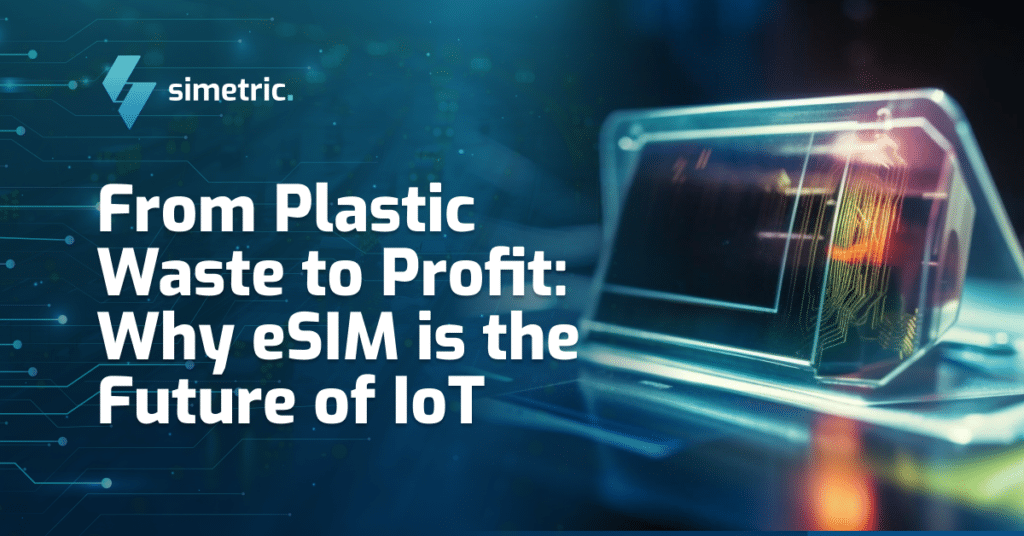The world is facing an ever-growing need to address climate change and environmental sustainability, and this includes rethinking how we manage technology. As climate-related disasters—from hurricanes to wildfires—continue to increase in frequency and intensity, companies must prioritize sustainable practices—or risk falling behind.
Among these, eSIM technology is emerging as a key solution, not only for streamlining IoT operations but also for significantly reducing the environmental impact of traditional SIM cards. And let’s be honest: Do you love managing millions of physical SIMs? Our customers are telling us – no..
In our previous post, “2024: The Year of the eSIM,” we explored the operational benefits of eSIM in simplifying global deployments. Now, let’s turn our attention to its sustainability benefits, as businesses face mounting pressure to adopt eco-friendly solutions. Spoiler alert: Your competition is already using it.

The Environmental Cost of Traditional SIMs
Traditional SIM cards, with 4.5 billion produced annually, contribute heavily to plastic waste—resulting in about 20,000 tons of plastic each year. That’s the equivalent of two Eiffel Towers in weight. But this isn’t just about plastic. Traditional SIM cards, made from materials like PVC, also rack up a hefty carbon footprint from manufacturing and global shipping. For an industry so focused on connectivity, we’re inadvertently contributing to environmental disconnection.
What’s worse, discarded SIM cards are part of the 53.6 million tons of e-waste generated globally each year. The combination of plastic waste and the energy used in manufacturing these cards adds significantly to the global carbon footprint. Sticking with traditional SIMs isn’t just outdated—it’s environmentally reckless.
Real-World Impact: eSIM as the Sustainable Alternative
The switch to eSIM isn’t just better—it’s crucial for businesses looking to reduce their environmental impact while improving efficiency. eSIMs generate 46% fewer CO2 emissions compared to traditional SIM cards, with an average carbon footprint of 123 grams per eSIM versus 229 grams for plastic SIMs.
And the cost savings? Up to 80%. eSIMs are about $0.50 per unit compared to $2.50 for physical SIMs. For telecom operators managing millions of devices, that’s real money. Do you love throwing money away? We didn’t think so.
In 2023, more than 400 mobile operators across 116 countries had already adopted eSIM technology, showing that your competitors are not just embracing sustainability—they’re also cashing in on the benefits. Are you keeping up?
The Broader Environmental Benefits of eSIM
- Plastic Waste Reduction: Traditional SIM cards produce 20,000 tons of plastic waste annually. By switching to eSIM, businesses can drastically cut down on this figure and do their part in reducing global waste.
- Lower Carbon Footprint: eSIM eliminates the logistics involved in shipping physical SIM cards, reducing the carbon footprint of the telecom industry. For every billion SIM cards replaced by eSIM, the industry saves nearly 100,000 metric tons of CO2 emissions.
- Extended Device Lifespans: eSIMs, embedded directly into devices, reduce the need for replacements caused by lost or damaged SIM cards. This, in turn, extends the lifespan of devices and reduces electronic waste.
- Cost and Resource Savings: Managing SIM profiles remotely through eSIM minimizes resource usage, such as fuel for transportation and the energy-intensive processes involved in traditional SIM card production. Why waste energy — and money — when you don’t have to?
The time for eSIM is now.
The environmental benefits of eSIM technology aren’t just about doing good for the planet—they’re about protecting your business. What happens when your outdated SIM management practices start bleeding cash, or worse, alienate eco-conscious customers? By reducing plastic waste, lowering carbon emissions, and extending device lifespans, businesses can cut costs while achieving their sustainability goals.
As we highlighted in our previous blog, eSIM is revolutionizing global IoT deployments, making 2024 a critical year for its adoption. Don’t wait until your competition leaves you behind. The risks are real, and so are the rewards.
At Simetric, our Next-Generation IoT Connectivity Management Platform (CMP) helps businesses streamline their operations and reduce their environmental impact. With tens of millions of devices already under management, we offer a scalable, future-proof solution to help companies thrive in a world of 30+ billion connected devices.
Want to see Simetric in action? We’ll show you how eSIM can boost both your bottom line and your sustainability goals.